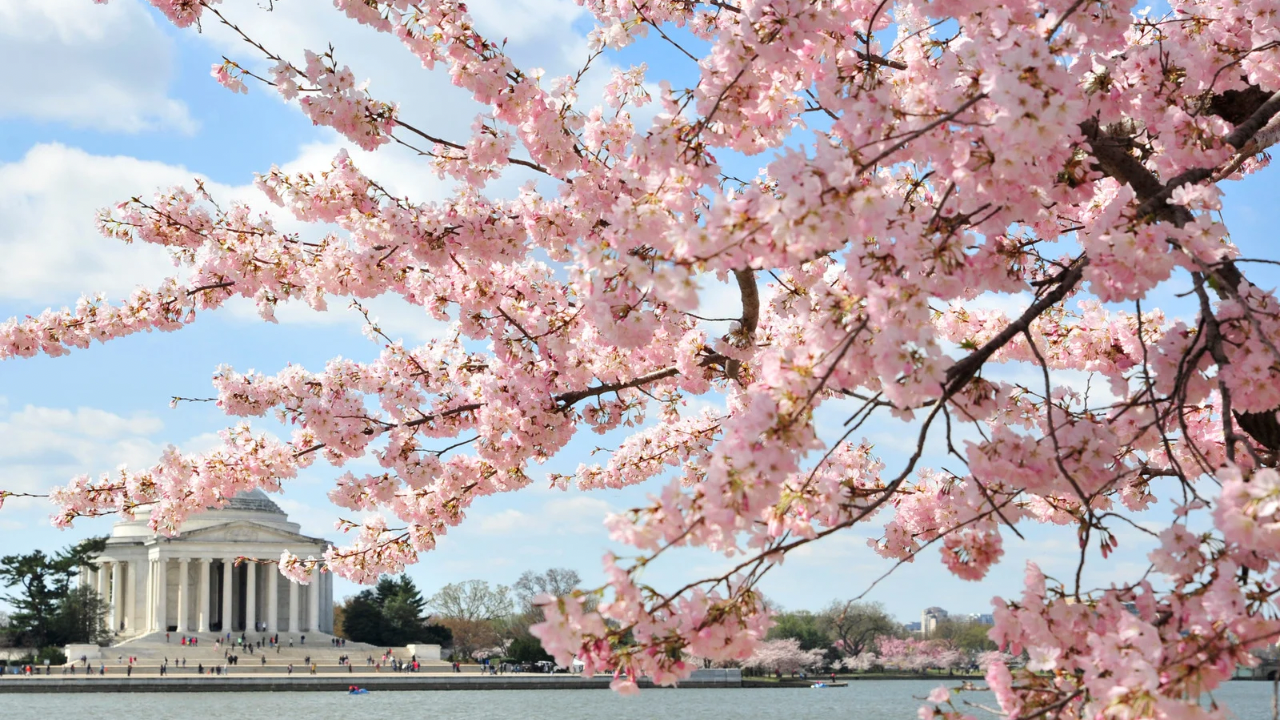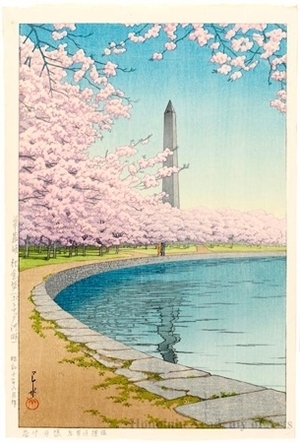Blooming Beauty: The Magic and History of Cherry Blossom Trees

Spring is here, and in Washington, D.C. and Virginia, that means that just about everything is in bloom, and especially so for the cherry blossoms.
The cherry blossoms are a sight to behold, certainly. The area was on a blossom watch, and as it happened this year, the blossoms were especially fleeting, through a combination of warm weather, strong winds, and heavy rains. Still, that adds to the allure and beauty.
What is blossom watch, you might ask? Tune in here to see the latest camera views of the Tidal Basin and other areas, and updated information on the actual blooms.
To learn about the history of Washington D.C’s cherry blossoms, you can read more about it here.
You can take a quick quiz offered by the Smithsonian to find out which cherry blossoms are most suited to your personality.
Some fun facts about the cherry blossoms before we part and load up on allergy medication (as I said, here in Virginia, in springtime, everything blooms, seemingly all at once!).
There are a dozen main varietals of cherry blossoms trees here in Washington, D.C.:
Somei-Yoshino
Ari ake
Fugen-zo
Fuku-roku-ju
Gyo-i-ko
Ichiyo
Jonioi
Kwan-zan
Mikurumagayeshi
Shira-yuki
Surugadainioi
Takinioi
In 1912, Japan gifted 3,000 cherry blossom trees to the United States as a symbol of friendship between the two countries. The majority of these trees are located around the Tidal Basin, and a mostly Yoshinos, a variety known as for its pale pink flowers.
The cherry blossoms in Washington, D.C. typically reach their peak bloom between late March and early April, and the timing varies depending on weather conditions each year.
The cherry blossoms only bloom for about 1-2 weeks each year, making their short-lived beauty even more precious and celebrated.
In Japan, cherry blossoms, or "sakura," are seen as a symbol of the fleeting nature of life, representing both beauty and the impermanence of life itself.
While most of the cherry blossom trees in Washington, D.C. are Yoshino, the city is also home to other varieties like the Kwanzan and the Shirofugen cherry trees, each with distinct colors and bloom times.
While many associate cherry blossoms with pale pink, some varieties, like the "Kwanzan" cherry, bloom with vibrant double-pink flowers, while others may appear white.
Cherry blossoms are vital for pollinators like bees, which are attracted to the sweet nectar of the flowers, making them an important part of the ecosystem.
The blooming period of cherry blossoms is sensitive to weather conditions. Unusually warm temperatures can cause the blooms to arrive earlier, while a late frost or wind can damage the delicate flowers.
Cherry blossom trees have a relatively short lifespan compared to other trees, usually living for about 30-40 years, but during that time, they create a spectacular annual display.
In Washington D.C., the cherry blossoms are seen as a celebration of both the beauty of nature and the enduring friendship between Japan and the United States.
An enduring favorite print is by Japanese artist Kawase Hasui . . . ‘The Washington Monument on the Potomac River.’ This is a stunning woodblock print that captures the iconic monument against a serene, misty backdrop. Published in 1935, it blends traditional Japanese printmaking techniques with an American subject, showcasing Hasui's mastery of atmospheric effects and the tranquil beauty of the scene.

